by Bruce Wells | Jul 1, 2025 | Energy Education Resources
Visiting America’s many petroleum museums is easy.
Summertime brings new visitors to community oil and gas museums, including teachers and students anticipating the return of field trips and K-12 programs as the school year approaches. The American Oil & Gas Historical Society advocates visiting these frontline energy educators.
Whether visited on vacation or during the school year, petroleum museums in Texas , Oklahoma, California, and Pennsylvania offer earth science and other petroleum-related exhibits. Visitors to all of oil and gas museums often are met by volunteer docents — retired petroleum geologists, engineers, or other oilfield professionals.

Petroleum exhibits educate visitors to the Texas Energy Museum in Beaumont, where a 1901 oil discovery at Spindletop Hill launched the modern petroleum industry. Photo by Bruce Wells.
In Texas, the Petroleum Museum in Midland includes many summer energy education programs for kids, as does the Ocean Star, an offshore rig museum in Galveston. Many community museums also are part of annual “derrick festivals,” which take place in Taft, California (West Kern Oil Museum), and other states with oil and gas production.
Alabama has a small county museum in Gilbertown with an “old Hunt oil rig” similar to the one that discovered the first oilfield in Alabama in 1944.
Further, many oil patch communities celebrate their petroleum heritage every summer with parades, special events, and museum tours.
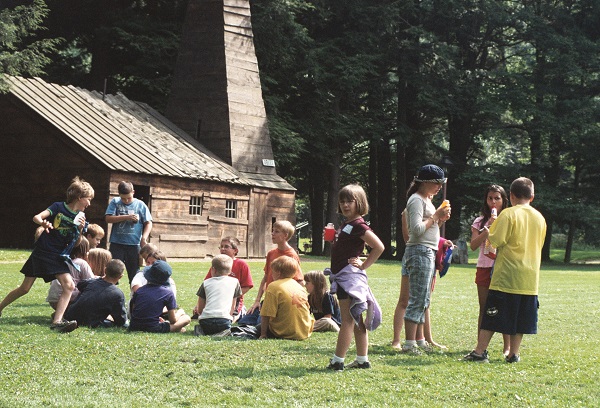
Visitors to the Drake Well Museum at Oil Creek in Titusville, Pennsylvania, can tour a replica of Edwin L. Drake’s cable-tool derrick and steam engine house among other outdoor exhibits. Photo by Bruce Wells.
For those interested in the industry’s exploration and production history and traveling this summer, check out these exhibits chronicling the nation’s discoveries.
Western New York boasts a museum in Bolivar with some of the nation’s earliest petroleum artifacts. While dairying and livestock have become the cash crops, the region still produces a small amount of very high-quality oil and natural gas, says Director Kelly Lounsberry. This museum tells the story of oil and natural gas production in the region.
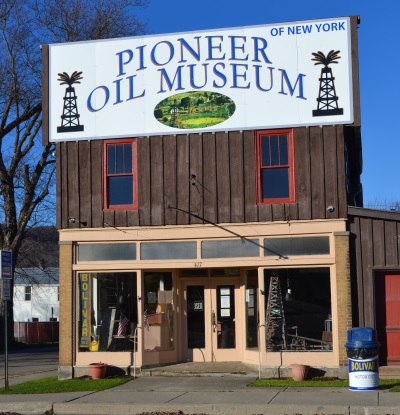
Exhibits at a museum in Bolivar, N.Y., include oilfield engines, maps, documents, pictures, models and tools. Wonderful Wizard of Oz author L. Frank Baum once owned a petroleum products company there – and sold oil cans. Photo by Bruce Wells.
The first U.S. well specifically intended to obtain natural gas was dug near Fredonia by William Hart, who had noticed gas bubbles on the surface of a creek. In 1821, he dug a 27-foot well and built a “log pipe” to bring gas to nearby houses for lighting.
Hart’s work led to the formation of the Fredonia Gas Light and Water Works Company – the first U.S. natural gas company, according to the American Gas Association, Washington, D.C., which was founded in 1918.
Further, thanks to the region’s oilfield production, L. Frank Baum opened a petroleum products business in Syracuse, N.Y., in 1883. The future author of The Wonderful Wizard of Oz once sold buggy wheel axle grease — and oil cans (learn more in Oil in the Land of Oz).

Just to the south of Bolivar, there are many museums and historic attractions in the state where the modern industry began: Pennsylvania.
East of I-79 in northwestern Pennsylvania, the Drake Well Museum in Titusville exhibits “Colonel” Edwin Drake’s famous August 27, 1859, discovery well – today recognized as the first U.S. oil producer.
The Drake Well Museum’s outdoor exhibits include a recreation of the original cable-tool derrick Drake used. Among the most popular summer attractions for young students is the “Nitro” well-fracturing reenactment demonstrating the use of “go-devils” for fracturing a well.
Visitors also can stop by the museum gift shop to find a reprint of The Early Days of Oil, by Dr. Paul Giddens, considered to be the “Bible” of information about the birth of the U.S. petroleum industry. Many images in the book are from originals made by photographer John A. Mather and preserved at the museum.
Located on 270 Seneca Street in Oil City – in a Beaux Arts building listed in the National Register of Historic Places – the Venango Museum of Art, Science & Industry preserves the oil region’s industrial heritage. Its exhibits include a 1928 Wurlitzer Theater Organ.
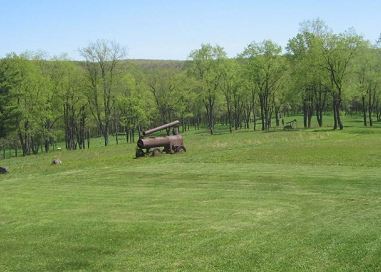
Once a world-famous Pennsylvania boom town, visitors today can walk the grassy paths of Pithole’s former streets. Photo by Bruce Wells.
Another must-see oil history spot is the Pennsylvania Historical and Museum Commission’s Pithole Visitors Center — the site of a vanished 1865 oil boom town now managed by Drake Well Museum. The once infamous boom town is in Oil Creek State Park.
A dedicated group of railroad enthusiasts maintains the Oil Creek & Titusville Railroad, a nonprofit group that offers trips through the historic oil region. Near the railroad is the refurbished home of “Coal Oil” Johnny. Read his fascinating tale in the Legend of “Coal Oil Johnny.”
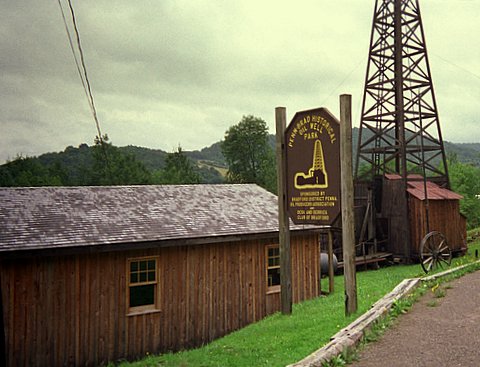
The Penn-Brad Oil Museum — and Historical Oil Well Park — is located three miles south of Bradford, Pennsylvania, on Route 219, near Custer City. Photo by Bruce Wells.
At nearby Oil City is a center dedicated to the study of the oil heritage region at Clarion University, Venango Campus. The Barbara Morgan Harvey Center for the Study of Oil Heritage contains hundreds of rare books of the region, newspaper clippings from the early 1900s, and even minutes from the meetings of early companies, maps, and photographs.
First Billion Dollar Oilfield
About 70 miles to the east of Titusville, the Penn-Brad Oil Museum (and historical oil well park) at Bradford takes visitors back to the early boom times of “The First Billion Dollar Oil Field.” Guided tours are conducted by retired geologists or petroleum engineers who volunteer their time to relate exciting first-hand experiences.
The museum in Custer City is three miles south of Bradford, along Rt. 219. Nearby is a refinery built in 1881 and still operated by the American Refining Group. The facility is considered the oldest continuously operating refinery in America.
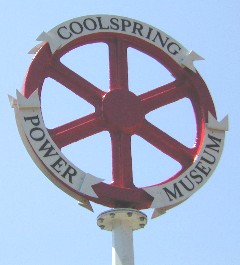
The museum maintains stationary internal combustion engines for education and enjoyment. Photo by Bruce Wells.
Before leaving Pennsylvania, visit one of the world’s largest collections of oilfield engines. Century old “hit and miss” gas engines, vintage oilfield equipment, and early electric generators are among the permanent exhibits at a unique “power museum” in Coolspring.
With perhaps the largest 19th-century engine collection in the world, the museum is housed in 13 buildings with about 250 engines – many of them operational.
The Coolspring Power Museum is located east of Pittsburgh just off Route 36 midway between Punxsutawney to the south and Brookville to the north. According to longtime Director Paul E. Harvey, the collection presents an illuminating history of the evolution of internal combustion technology that put an end to the steam-powered era.
Twice a year engine collectors from around the country gather on the extensive grounds – and the “barking” of hundreds of antique engines lasts several days.
Community oil and gas museums are linked to the AOGHS website. Museum events and K-12 education efforts are featured alongside stories of America’s petroleum heritage.
_______________________________
The American Oil & Gas Historical Society preserves U.S. petroleum history. Please become an AOGHS annual supporter and help maintain this energy education website and expand historical research. For more information, contact bawells@aoghs.org. © 2025 Bruce A. Wells.
Citation Information – Article Title: “Summer Travels to Oil Museums” Authors: B.A. Wells and K.L Wells. Website Name: American Oil & Gas Historical Society. URL: https://aoghs.org/energy-education-resources/pennsylvania-petroleum-vacation. Last Updated: July 6, 2025. Original Published Date: May 7, 2013.
by Bruce Wells | Dec 9, 2024 | This Week in Petroleum History
December 9, 1921 – Scientists discover Anti-Knock Properties of Leaded Gas –
Working for General Motors, scientists Thomas Midgely Jr. and Charles Kettering discovered the antiknock properties of tetraethyl lead. They had spent years examining properties of knock suppressors such as bromine and iodine, but when tetraethyl lead (diluted to a ratio of one part per thousand) was added to the gasoline of a one-cylinder engine, the knocking abruptly disappeared.
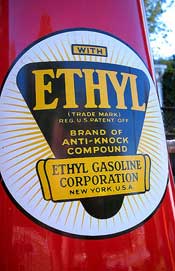
Public health concerns would lead to phase-out of tetraethyl lead in gasoline.
GM’s leaded compound went on sale for the first time on February 2, 1923, at a service station in Dayton, Ohio. High-octane leaded gas would prove vital during World War II — even as concerns about tetraethyl lead’s serious health dangers continued to grow. These concerns resulted in its phase-out for use in cars beginning in 1976. Tetraethyl lead has continued to be used in aviation fuel.
Learn more in Ethyl “Anti-Knock” Gas.

December 9, 1924 – Oklahoma Oil Boom at Seminole
Drilling in the Greater Seminole area of Oklahoma, Amerada Petroleum Corporation discovered the Bethel oilfield and its highly pressurized producing zone, the Wilcox sand. The discovery launched another drilling boom in an area where one year earlier independent producer Joe Cromwell had found the Seminole oilfield at a depth of about 3,500 feet. By 1926, yet another discovery opened the Earlsboro field, followed within days by a discovery well that produced 1,100 barrels of oil a day from the Seminole City field.
Learn more in Seminole Oil Boom.
December 10, 1844 – Future “Coal Oil Johnny” adopted in Pennsylvania
A baby who would grow up to become famously known as “Coal Oil Johnny” was adopted by Culbertson and Sarah McClintock. John Steele was brought home to the McClintock farm on the banks of Oil Creek in Venango County, Pennsylvania.
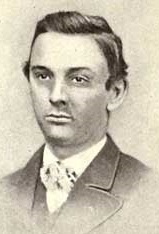
John Washington Steele
The petroleum drilling boom prompted by Edwin L. Drake’s discovery 15 years later — America’s first commercial oil well — would lead to the widow McClintock making a fortune in oil royalties. She left the money to Johnny when she died in 1864. At age 20, he inherited $24,500 and $2,800 a day in royalties.
“Coal Oil Johnny” Steele earned his name in 1865 after such a legendary year of extravagance that the New York Times later reported: “In his day, Steele was the greatest spender the world had ever known…he threw away $3 million ($50 million in 2021 dollars) in less than a year.”
Learn more in Legend of “Coal Oil Johnny.“

December 10, 1955 – LIFE features Stella Dysart’s Uranium Well
Mrs. Stella Dysart spent decades fruitlessly searching for oil in New Mexico. Some questionable business dealings led to bankruptcy in the late 1930s, but in 1955, a radioactive uranium sample from one of her failed oil wells made her a very wealthy woman.
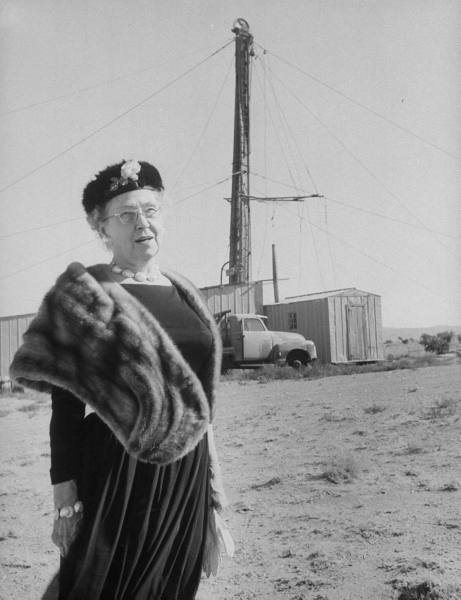
LIFE magazine featured Stella Dysart in December 1955.
Dysart was 78 years old when LIFE magazine featured her picture with the caption: “Wealthy landowner, Mrs. Stella Dysart, stands before an abandoned oil rig which she set up on her property in a long vain search for oil. Now uranium is being mined there and Mrs. Dysart, swathed in mink, gets a plump royalty.”
Just three years before the article, Dysart had been $25,000 in debt when cuttings from one of her “dusters” in McKinley County registered strong Geiger counter readings. Test wells confirmed that she owned the world’s richest deposit of high-grade uranium ore.
Learn more in Mrs. Dysart’s Uranium Well.
December 10, 1967 – Project Gasbuggy tests Nuclear Fracturing
Government scientists detonated a 29-kiloton nuclear warhead in a natural gas well about 60 miles east of Farmington, New Mexico. It was “fracking” late 1960s style, designed to test the feasibility of using nuclear explosions to stimulate release of gas trapped in shale deposits.
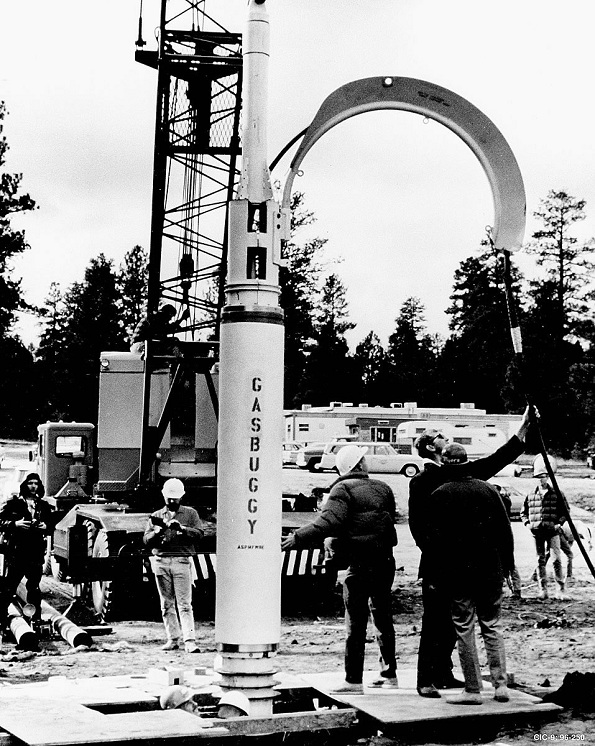
Scientists in December 1967 lowered a 29-kiloton nuclear device into a New Mexico gas well. Photo courtesy Department of Energy.
Project Gasbuggy included experts from the Atomic Energy Commission, the Bureau of Mines, and El Paso Natural Gas Company. Near three low-production natural gas wells, the team drilled to a depth of 4,240 feet and lowered a 13-foot by 18-inch diameter nuclear device into the borehole.
The experimental explosion was part a series of federal projects known as “Plowshare,” created in the late 1950s to explore peaceful uses of nuclear devices. The Project Gasbuggy downhole detonation created a molten glass-lined cavern 160 feet wide and 333 feet tall that collapsed within seconds. The well produced 295 million cubic feet of natural gas, but the gas was radioactive and useless.
Learn more in Project Gasbuggy tests Nuclear “Fracking.”

December 11, 1950 – Federal Offshore grows beyond Cannon Shot
After decades of controversy and a 1947 U.S. Supreme Court decision, the federal government’s “paramount rights” offshore were established beyond a three nautical mile limit, an 18th century precedent based on the theoretical maximum range of a smooth-bore cannon. The nation’s highest court prohibited any further offshore development without federal approval. In 1954, the Bureau of Land Management held the first Outer Continental Shelf lease sale, earning the government almost $130 million.
Learn more in Offshore Petroleum History.
December 11, 1972 – First Geologist walks on Moon
Astronaut and geologist Harrison “Jack” Schmitt stepped on the moon, joining Apollo 17 mission commander Eugene Cernan. Lunar experiments included a surface gravimeter to measure buried geological structures near the landing site. Schmitt also returned with the largest lunar sample ever collected.
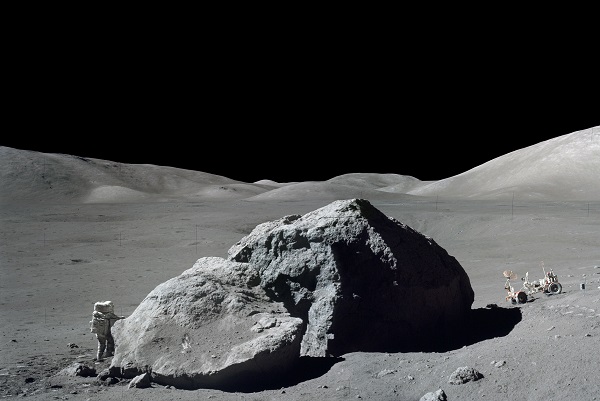
Geologist Harrison “Jack” Schmitt examined a boulder at the Apollo 17 Taurus-Littrow Valley lunar landing site in December 1972. Photo courtesy NASA.
Schmitt, who in 1964 received a PhD in geology from Harvard, was the first and last scientist on the moon, according to Cernan. When they left the Taurus-Littrow Valley landing site on December 14, 1972, he and the lunar geologist were the last of 12 men to walk on the moon. The 19th century petroleum product kerosene fueled all of the launches.
December 13, 1905 – Hybrids evolve with Gas Shortage Fears
“The available supply of gasoline, as is well known, is quite limited, and it behooves the farseeing men of the motor car industry to look for likely substitutes,” proclaimed the monthly journal Horseless Age.
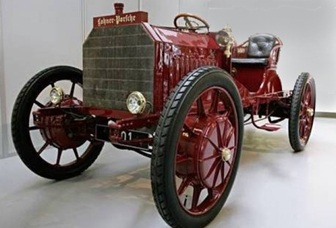
An early hybrid, this 1902 Porsche used a gas engine to generate electricity to power motors mounted on the front wheel hubs.
The magazine, first published in 1895, described early motor technologies, including the use of compressed air propulsion systems, electric cars, steam, and diesel power — as well as hybrids.
About the time of the first American auto show in November 1900, engineer Ferdinand Porsche introduced his gas-electric “Mixte” in Europe. The hybrid used a four-cylinder gasoline engine to generate electricity. The engine powered two three-horsepower electric motors mounted on the front wheel hubs. The car could achieve a top speed of 50 mph.
December 13, 1931 – Oilfield discovered in Conroe, Texas
Independent producer George Strake Sr. completed the South Texas Development Company No. 1 well eight miles southeast of Conroe, Texas, where he had leased 8,500 acres. By the end of 1932 the oilfield was producing more than 65,000 of barrels of oil a day. But disaster struck in the Conroe field in 1933 when derricks and equipment collapsed into a burning crater of oil. The fire would be put out thanks to relief wells drilled by George Failing and his newly patented truck-mounted drilling method (see Technology and the Conroe Crater).

December 13, 1985 – Route 66 decertified
Route 66, the “Mother Road” of modern highways since 1926, was decertified by the American Association of State Highway and Transportation Officials (AASHTO), which also voted to remove all Route 66 signs. Once stretching more than 2,400 miles from Illinois to California, the historic route was trailblazed in 1857 by a War Department expedition that included camels as pack animals.
By World War II, automobiles and trucks on the iconic roadway “helped to facilitate the single greatest wartime mobilization of labor in the history of the nation,” according to the National Park Service (NPS). By 1985, Route 66’s narrow asphalt paving and antiquated structure had been bypassed by the interstate system.
Learn more U.S. transportation history in America on the Move.
December 14, 1981 – Dowsing No Help in finding Minnesota Oil
Seeking oil investors, a Minnesota promoter proclaimed that dowsing with copper wires had located petroleum deposits in Nobles County, according to the Minneapolis Tribune, which reported the promoter had hired, “a Texas oilman and evangelist to lead a prayerful search for oil.” Despite no geological evidence, local investors paid $175,000 to drill a well that found no indication of oil or natural gas after reaching a depth of 1,500 feet.
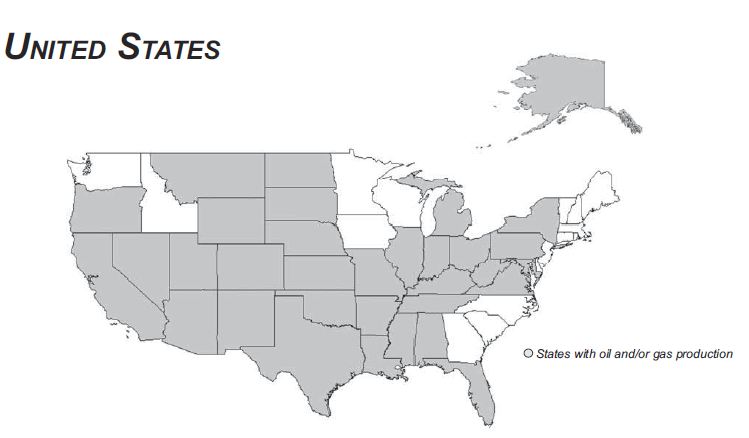
Minnesota is one of 17 states without any oil or natural gas production, according to the Independent Petroleum Association of America.
The Minnesota Geological Survey had reported in 1980 that of the state’s 17 exploratory wells drilled, “in suitable geologic settings,” none discovered commercial quantities of oil. The survey concluded, “the geologic conditions for significant deposits of oil and gas do not exist in Minnesota.”
_______________________
Recommended Reading: Fill’er Up!: The Great American Gas Station (2013); A History of the Greater Seminole Oil Field (1981); The Legend of Coal Oil Johnny
(2013); A History of the Greater Seminole Oil Field (1981); The Legend of Coal Oil Johnny (2007); Project Plowshare: The Peaceful Use of Nuclear Explosives in Cold War America
(2007); Project Plowshare: The Peaceful Use of Nuclear Explosives in Cold War America (2012); Stella Dysart of Ambrosia Lake: Courage, Fortitude and Uranium in New Mexico
(2012); Stella Dysart of Ambrosia Lake: Courage, Fortitude and Uranium in New Mexico (1959);
(1959);  Apollo and America’s Moon Landing Program: Apollo 17 Technical Crew Debriefing
Apollo and America’s Moon Landing Program: Apollo 17 Technical Crew Debriefing (2017); Electric and Hybrid Cars: A History
(2017); Electric and Hybrid Cars: A History (2010); Down the Asphalt Path: The Automobile and the American City
(2010); Down the Asphalt Path: The Automobile and the American City (1994).
(1994).
_______________________
The American Oil & Gas Historical Society (AOGHS) preserves U.S. petroleum history. Please become an AOGHS annual supporter and help maintain this energy education website and expand historical research. For more information, contact bawells@aoghs.org. Copyright © 2024 Bruce A. Wells. All rights reserved.
















